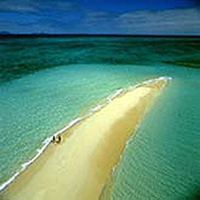Intelligent Spas Releases Results of Australian Spa Industry Survey

Intelligent Spas, an independent research company specialising in the spa industry, is currently rolling out the Spa Industry Survey Programme in major spa markets across the Asia Pacific region å- starting with Australia. It is said to be the most comprehensive and consistent, multi-national spa survey ever conducted, and is critical to providing necessary statistics and information as the industry experiences rapid expansion.
Intelligent Spas has finally provided the Australian spa industry with statistics to track progress and identify interesting market trends.
Julie Garrow, Founding Director of Intelligent Spas is very pleased with the response to date, stating “The findings provide spa facilities with valuable, detailed industry statistics to assist their business decisions. It also outlines critical information that other organisations can use to better service and support the spa industry.”
Australian Spa Industry Results
The Australian Spa Industry Survey Programme was endorsed by the Australasian Spa Association, and generated the following main results:
Over two million people visited spas during 2001/2002, including approximately 100,000 international tourists.
Spa facilities generated approximately 15 million dollars in revenue during the 2001/2002 financial year.
43% of spas were located within another facility, such as a hotel.
The majority of spas operating in Australia were self-managed.
More casual employees were hired, on average, in comparison to full-time employees.
Spas had seven private treatment rooms on average.
The two largest categories of spas included day spas and hotel/resort spas.
75% of spa visitors were female, 25% male.
The highest average age range of visitors to day spas was 30-39 years, compared to hotel/resort spas, which was 40-49 years.
A higher proportion of hotel/resort spa revenue came from massage services, whereas beauty services accounted for the highest proportion of day spa revenue.
The therapies practiced most often in spas were aromatherapy and mud therapy.
The majority of day spas used a property management software system, whereas only one quarter of hotel/resort spas did.
A higher proportion of hotel/resort spas made a profit compared to day spas.
Hotel/resort spas predicted a higher increase in the number of spa employees in the next twelve months, compared to day spas.
Day spas were more challenged with managing expenses, compared to hotel/resort spas that had more difficulty recruiting staff and meeting client expectations.
Kirien Withers, President of the Australasian Spa Association states, “The Survey Programme will provide valuable directional information for spas and new spa developments resulting in spa concepts, marketing and programmes that truly reflect market demand, thereby increasing the size of the spa going market. It will also supply long awaited information for discussions with organisations such as investors and lenders, Government departments and the media”.
ADVERTISEMENT
About the Spa Industry Survey Programme
The Spa Industry Survey Programme was specifically designed by Intelligent Spas to capture much needed statistics to assist spas and other members of the spa industry, benchmark performance and make informed business decisions. The in-depth, self-fill survey captured valuable information relating to spa type, treatments and services, infrastructure and equipment, technology, ownership and management, positioning and marketing, visitation and client profiles, human resources, advisors, training and education, financial analysis and forecasts, and trends and current issues.
Over 100 questions were asked of the spas covering both quantitative and qualitative statistics. Quantitative data was collected for the fiscal year July 2001 to June 2002, as well as more historical data for 1999/2000 and 2000/2001, so that trends relating to revenue, employee numbers and spa visits could be established. The spas were also asked to predict their performance in 2002/2003 so forward looking trends could be benchmarked. Qualitative data captured related to topics such as productive marketing activities, training needs, industry trends and major challenges.
Approximately fifteen percent of the questions were related to key financial statistics, including total revenue, average spend per visit and development costs.
As Intelligent Spas is a completely independent research company; it does not consult to individual businesses, the spas could feel comfortable in sharing their data as confidentiality was assured. The survey was also professionally designed using appropriate data ranges for the most sensitive data, such as revenue and salary levels by job type, which also made the completion of the surveys easier.
The programme has been successfully implemented in Australia, Singapore and Thailand. Other country surveys across the region are currently underway and will be available from April 2003.
Intelligent Spas, together with the Australasian Spa Association, would like to sincerely thank the participants of the Spa Industry Survey Programme for their time and effort in completing the survey. Each participant received a copy of the Spa Benchmark Report, which also incorporated analytical tables and graphs to compare their individual performances against the industry averages.
The Australian Spa Industry Survey Report is available for purchase online at Intelligent Spas. For further information, contact Julie Garrow [email protected]. Telephone +65 6248 4736.
Intelligent Spas was founded to address the increasing need for quality research relating to the spa industry. This independent research company provides market intelligence to guide spa industry growth, development and performance.
Intelligent Spas offers a completely objective view of the spa industry as it does not conduct consulting studies on behalf of individual businesses and does not endorse or distribute any third party, spa-related products. “Our research is self-funded, without bias and conducted for the benefit of all members of the spa industry,” Garrow concludes.
——-

